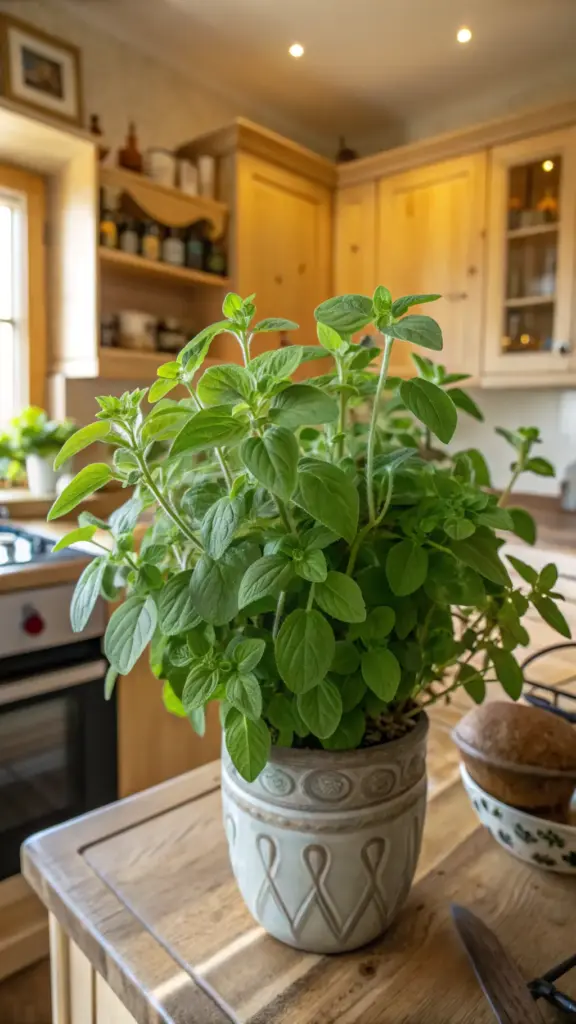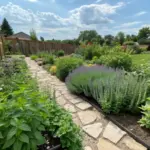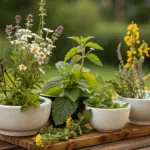3. Planting Your Oregano

After countless container gardens and some memorable soil-under-the-nails moments, I’ve perfected the art of planting oregano. Let me share my tried-and-true method that’ll give your herbs the best start possible!
Creating the Perfect Soil Mix
The secret to thriving oregano starts with the soil! Here’s my winning combination:
- 2 parts quality potting soil (organic if possible)
- 1 part perlite for improved drainage
- 1 part coarse sand for Mediterranean-style growing conditions
- A handful of compost for slow-release nutrients
Pro tip: Avoid garden soil for containers – it’s too heavy and can harbor unwanted pests!
Setting Up Proper Drainage
Let’s talk about keeping those roots happy! Here’s my foolproof drainage setup:
- Start with a container with multiple drainage holes
- Add a layer of small gravel or clay pebbles
- Place a piece of mesh screen over drainage material
- Never skip the drainage layer – trust me on this one!
Spacing Your Plants
Giving your oregano room to grow is crucial! Here’s what I’ve learned:
- Allow 8-10 inches between plants
- Keep at least 2 inches from container edges
- One plant per 8-inch pot is ideal
- Consider future growth when spacing multiple herbs
Step-by-Step Planting Guide
Time to get planting! Here’s my no-fail process:
- Fill container with soil mix, leaving 2 inches at top
- Create a hole twice as wide as the root ball
- Gently remove plant from nursery container
- Loosen root ball if tightly bound
- Position plant at same depth as original container
- Fill in with soil and firm gently
- Water thoroughly until it drains from bottom
Adding Decorative Mulch
Let’s make it pretty! My favorite mulch options include:
- Small river rocks for a modern look
- Crushed shells for coastal vibes
- Glass beads for contemporary style
- Natural bark for a rustic feel
Remember to leave some space around the stem – no mulch should touch it directly!
Ready to learn the secrets of keeping your newly planted oregano thriving? Click that “next” button below, and I’ll share my daily care routine that keeps these herbs growing like crazy! You won’t believe how simple it is to maintain healthy, bushy plants once you know the right techniques. Plus, I’ll reveal my special pruning method that encourages maximum growth and prevents that dreaded leggy look!









GIPHY App Key not set. Please check settings